In celebration of 25 years of KNX, we interviewed the current members of the KNX Executive Board to find out their views on the standard’s recent successes, what their hopes are for the future, and the one thing they would like to achieve for KNX above all else. Here are their thoughts:
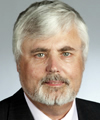 Franz Kammerl, Head of Business Segment System and Room Automation for Siemens Building Technologies, Switzerland, and President of KNX Association International.
Franz Kammerl, Head of Business Segment System and Room Automation for Siemens Building Technologies, Switzerland, and President of KNX Association International.
For me, the most important KNX developments and events in recent times have been the introduction of KNX to the USA, the WorldSkills event that takes place in Brazil, and 25 Years of KNX in Switzerland.
I would like to see KNX develop several directions. Firstly, KNX should be better positioned in the Internet of Things (IoT) environment. Secondly, we need to enlarge the disciplines that KNX covers, and thirdly, we need to complete the world map by introducing KNX to the US market. Indeed we have already made progress on all of these tasks, so I am confident that we are ‘future proofed’.
The one thing I would like to achieve for KNX above all else is to maintain its position as the number one system in the world for home and building control.
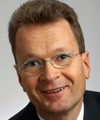 Adalbert M. Neumann, CEO of Busch-Jaeger Elektro GmbH and Chairman of KNX Germany.
Adalbert M. Neumann, CEO of Busch-Jaeger Elektro GmbH and Chairman of KNX Germany.
The most exciting thing in recent times was the KNX Awards – a wonderful event which last took place during the KNX Top Event at Light+Building fair in 2014 in Frankfurt. The KNX Awards recognises outstanding KNX projects in home and building automation globally, that are leading in terms of innovation and technical progress. And, of course, the new KNX countries, such as Australia, India, South Korea, Japan, Taiwan, Canada, and the USA.
Our aim is to position KNX as a leading, standardised system for home and building automation, both for functional buildings and for ‘intelligent living’. Home and building automation has already undergone a tremendous upswing, and demand is on the increase. KNX has long established itself in functional building technology, but for residential applications, KNX also has great potential. KNX is key to maximum comfort, safety and efficiency, and we would like to see it expand further in home control.
KNX is a worldwide standard that enables the implementation of manufacturer-independent networking concepts. The one thing I would like to achieve above all else is the globalisation of KNX. This is a mammoth task, but it is happening gradually. We shall have to push ahead with this, so that we can easily enable ‘smart’ devices such as sensors, gateways, routers, etc., to be combined, around the world.
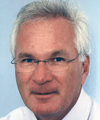 Harald Jung, Managing Partner, Albrecht Jung GmbH & Co. KG.
Harald Jung, Managing Partner, Albrecht Jung GmbH & Co. KG.
It is not just recent times that have been exciting – I remember KNX (or Instabus as it was called at the time) being born 25 years ago, and we were the midwives! More recently, what stood out for me was the KNX Top Event at the last Light+Building fair. The icing on the cake was that a winning project of the KNX Awards was once again equipped with JUNG products.
I hope that use of KNX will continue to spread. After all, we are well equipped to meet the requirements of the smart home and modern building automation, and issues such as KNX RF and security are already on our roadmap. It would be good to see products become more user-friendly and commissioning become simpler so that we can inspire more installers and systems integrators to use KNX.
I would also like to congratulate all who have helped, during the last 25 years, to establish KNX as the worldwide standard for home and building control.
 Bernard SCHOTT, Technology and Partnership director of the Business Group for Building Automation of Hager, and Vice-President of the KNX Board.
Bernard SCHOTT, Technology and Partnership director of the Business Group for Building Automation of Hager, and Vice-President of the KNX Board.
The most exciting event concerning KNX in recent times was the Light+Building fair in Frankfurt, where the KNX city was really impressive. The more recent event of note is, of course, the creation of the national group in USA.
My hope for KNX is that the wireless KNX RF achieves the same market share as the twisted pair (TP) solution. The one thing I would like to achieve for KNX above all else is to address successfully the mid-segment building renovation market, including the energy management linked to the smart grid.
 Martin Lindemann, Global Offer Management Director Smart Devices, Merten & Schneider Electric.
Martin Lindemann, Global Offer Management Director Smart Devices, Merten & Schneider Electric.
The major success in recent years is the steadily increasing number of Partners who are selling end-user-focused solutions based on the KNX standard, every day. Besides the successful launch of ETS 5, the globalisation of KNX is a key driver, added to which is the latest great news of the foundation of KNX USA.
To drive KNX forward, we need to do two things at once. On one hand, we need to continue on the successful path of recent years and further broaden our customer base. For this, it is key that we remain a reliable partner with a reliable standard that KNX has always been since its foundation 25 years ago. On the other hand, we need to keep an eye on other technologies (and competitors) in the home and building control market, and be open to adapting to market trends.
Based on the intention of further broadening our customer base, the one thing I would like to achieve for KNX above all else is to reduce, as much as we can, the barrier to entry to doing business with KNX solutions. With the latest ETS developments we have made a good start, but we need to continue in this way.
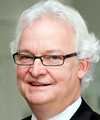 Dirk Giersiepen, Managing Partner, Gira Giersiepen GmbH & Co. KG.
Dirk Giersiepen, Managing Partner, Gira Giersiepen GmbH & Co. KG.
On a personal level, I can trace the KNX success story back to 1991. Its triumph over other bus systems, internationally, is very impressive, particularly in commercial buildings, and its development into a worldwide standard is evidenced by its growing community. We now have over 47,000 KNX Partners in 134 countries, 313 training centres in 56 countries, and 16 Userclubs in 15 countries. There is no reason why this trend should not continue, especially given that we now have almost 400 manufacturers worldwide who have opted for KNX.
I would like to see the success that KNX has had in commercial buildings, thanks to simplified engineering and commissioning, and user-friendliness, extend into the residential sector. I am sure that the introduction of the wireless KNX-RF will help, and I would also like to see more control put in the hands of the end-user.
The future is likely to be more diverse, and the need for the different trades involved in a building to be able to network properly, will increase. The focus will be on simpler commissioning concepts, on greater flexibility and on increased security. It is important therefore, to accommodate greater functionality by continually developing the KNX standard, whilst at the same time ensuring a firm regulatory framework in order to guarantee reliable interoperability between different products.
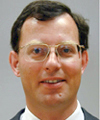 Hans-Joachim Langels, Head Building and Lighting Control, Siemens AG.
Hans-Joachim Langels, Head Building and Lighting Control, Siemens AG.
The most exciting development in recent times was the foundation of KNX National Group USA. This means that KNX now has a presence in all regions of all world.
I hope that KNX will grow to be so popular that it is taken for granted as the basis for home and building control infrastructure by the different trades involved in a building. As steps in this direction, I look forward to KNX technology advances in data security and web services.
I would like to maintain the core advantages of KNX, namely interoperability, a single tool and certified training, as it becomes the de facto standard for home and building control infrastructure.
 Jean-Christophe Krieger, Strategic Marketing Director Building Automation Systems, Schneider Electric.
Jean-Christophe Krieger, Strategic Marketing Director Building Automation Systems, Schneider Electric.
The most exciting developments recent times have been the successful launch of ETS5, and the growing number of members in the different national groups. KNX has been around for 25 years and is going from strength to strength, with the number of Partners, manufacturers, countries, national groups, and trainers all continually increasing.
I want KNX to embrace the IoT, to see KNX in the cloud, and for the standard to be actively involved in some key smart home initiatives. I would also like to make ETS accessible to many more partners, both technically and financially, so that the standard and technology become ubiquitous.
 Peter Kellendonk, Founder of the Kellendonk Group.
Peter Kellendonk, Founder of the Kellendonk Group.
KNX has always been backwardly compatible to ensure security of investment, so for me, the launch of KNX RF has been the most significant development. In dynamic times such as these, securing existing businesses models while developing new ones is more important than ever.
In the emerging market of the IoT, open and dynamic participation is essential. The IoT will be a significant market in the future, and it is already opening up. Ensuring the vitality of KNX and all of its features regarding the IoT is most important to me, so I look forward to KNX, with all of its market potential and enormous influence, establishing more convergence with other systems so that it can fully exploit the potential that this market has to offer.
 Thomas Goes, CEO of Theben AG.
Thomas Goes, CEO of Theben AG.
The most exciting development in recent times has been the internationalisation and spread of KNX. With 374 KNX manufacturers across 37 countries and more than 47,000 KNX partners in 135 countries, KNX is a real success story.
KNX was especially designed for electrical installers, and now, after some 25 years, a lot of things have changed. On the one hand, we have to widen the focus of KNX onto other applications such as lighting, entertainment control and HVAC, and on the other, we must be open for new technologies such as IP communication. In addition, there are real opportunities for skilled tradespeople and businesses across different fields, such as heating installers, panel builders and electrical contractors, to learn more in the field of KNX, and really benefit from good cooperation.
To make KNX even smarter, we need inventive and competitive solutions based on KNX, not only for high-end villas, but for standard homes as well. We have to ensure that end-customers and private users desire KNX technology for their ‘smart home’.
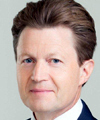 Dr Matthias Bölke, CEO of Schneider-Electric Schweiz AG, CEO of Feller AG, and National Group President of Switzerland & Austria.
Dr Matthias Bölke, CEO of Schneider-Electric Schweiz AG, CEO of Feller AG, and National Group President of Switzerland & Austria.
With the integration of KNX-RF directly in ETS, the application range of KNX has been increased significantly. The renovation market in Europe is one of the biggest and most important, but with KNX-TP, it has not been easy to retrofit existing buildings. Incorporating KNX-RF within ETS facilitates integration and provides a better overview.
The fact that KNX technology has become the standard over the past 25 years is beyond doubt. Nevertheless, it is obvious that with the growing number of users, different requirements are increasing too. For this reason, I hope that even more vendors design their products for KNX so that we benefit from more flexibility and a greater range of functions.
To ensure the success of KNX, more electricians must adopt the technology as standard in their product range. To achieve this, we need a more approachable entry level into the technology.
 Dr. Herbert Schliffke, Managing Director of Insta Elektro GmbH.
Dr. Herbert Schliffke, Managing Director of Insta Elektro GmbH.
The most exciting developments for me recently, have been KNX Association’s impressive presence at Light+Building 2014 and the overwhelming customer response to it, the launch of ETS5, and the 25th anniversary of KNX Association.
I would like to see KNX Association continue its successful development by growing further and integrating with other trades. The challenge for KNX is to respond to the evolution of the IoT, and to offer appropriate solutions. As ETS and the technical standards of KNX develop, I am confident that KNX will increase its reach even further as the standard for home and building control.
The one thing I would like to achieve for KNX above all else is that within two years, KNX Association will welcome its 500th (manufacturer) Member.
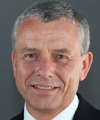 Harald Horst, Head of Business Development and Global Sales Manager Building Space, Solutions & System Integrators channel, Business Unit Enclosures and DIN-Rail Products Low Voltage Products Division at ABB Ltd.
Harald Horst, Head of Business Development and Global Sales Manager Building Space, Solutions & System Integrators channel, Business Unit Enclosures and DIN-Rail Products Low Voltage Products Division at ABB Ltd.
The thing that most impressed me in recent times was the KNX city at the Light+Building fair in 2014, and again at the ISH in 2015. This clearly demonstrated that KNX is not only the fundamental technology for intelligent buildings in the field of electrical installation and lighting, but also increasingly for HVAC applications. Additionally, the topics of security and safety are becoming more and more interesting for professionals who are looking for common automation standards and solutions for building control. KNX has established itself not only as an international standard for intelligent installation in homes and buildings, but guarantees integrated solutions across different fields of application. The KNX facts and figures speak for themselves.
I would like to see KNX develop further, according to current market requirements, both thematically and technically. What exactly that involves in terms of how smart homes and smart buildings will be integrated into smart city concepts, is something that the KNX working groups need to determine and, accordingly, develop the KNX standard further. Comfort, security and energy efficiency are important arguments that KNX must bring to life for today’s generation of ‘digital natives’ – the home builders of tomorrow.
The one thing I would like to achieve for KNX above all else is to celebrate its 50th birthday in 25 years’ time!












